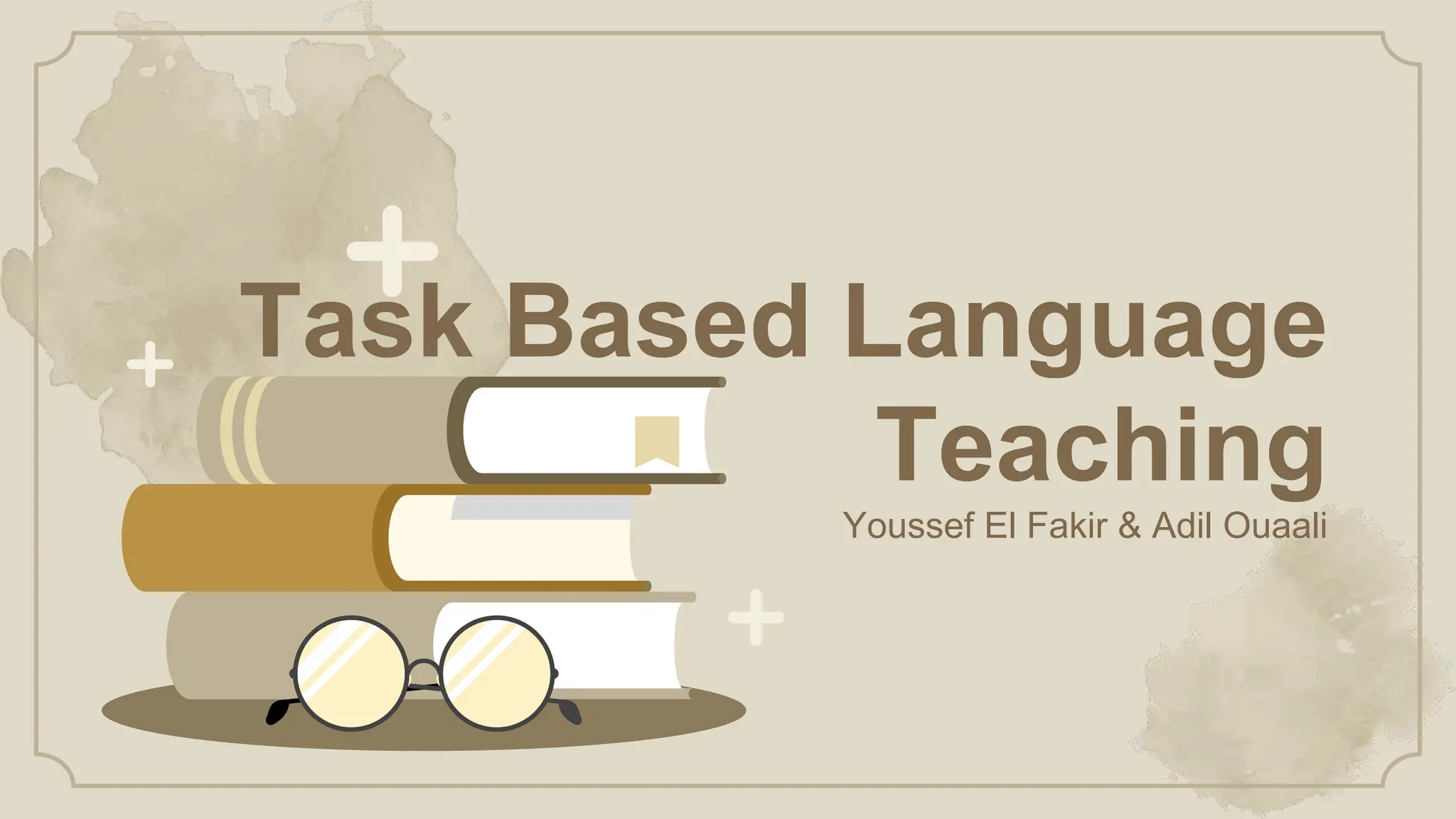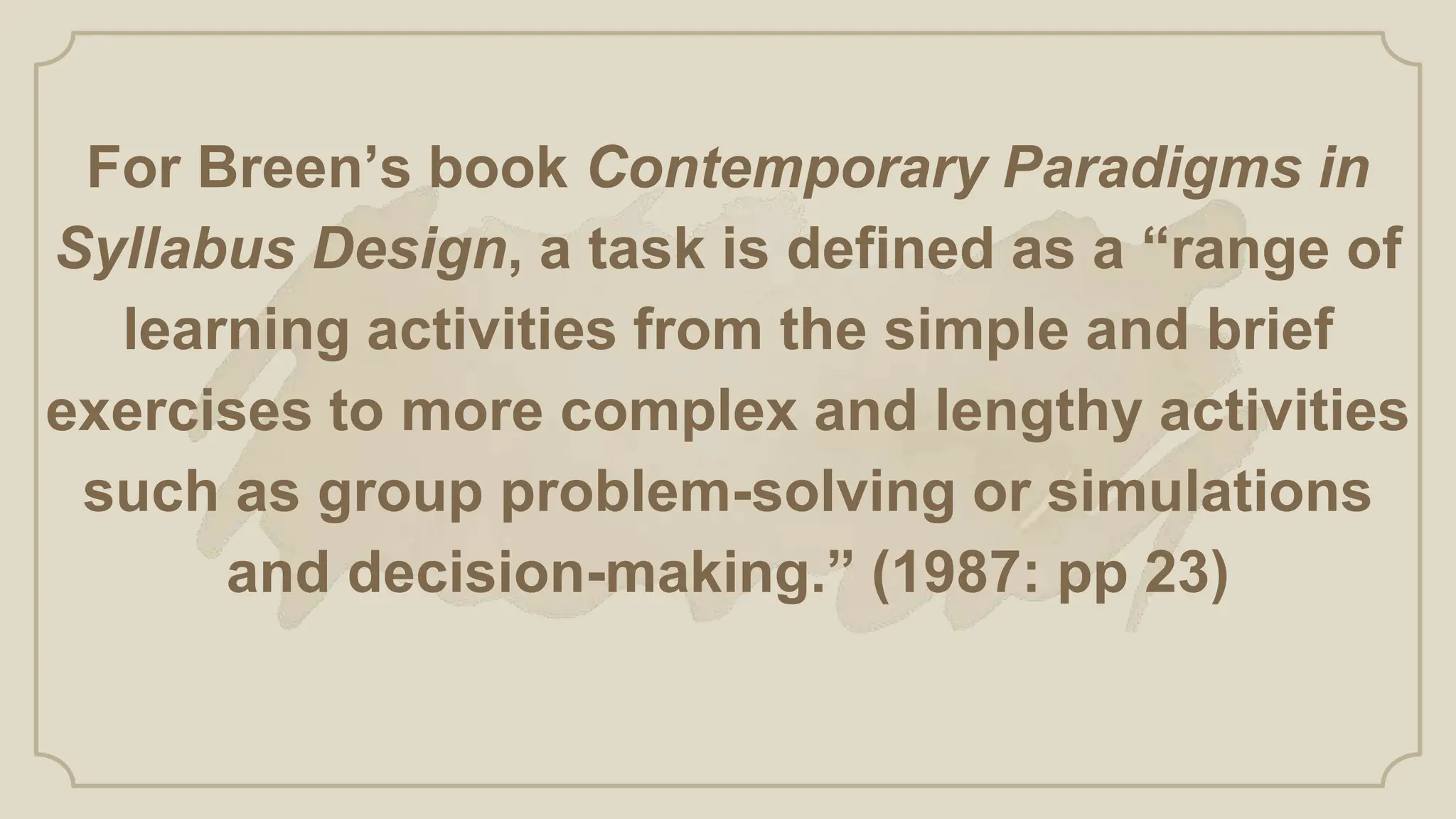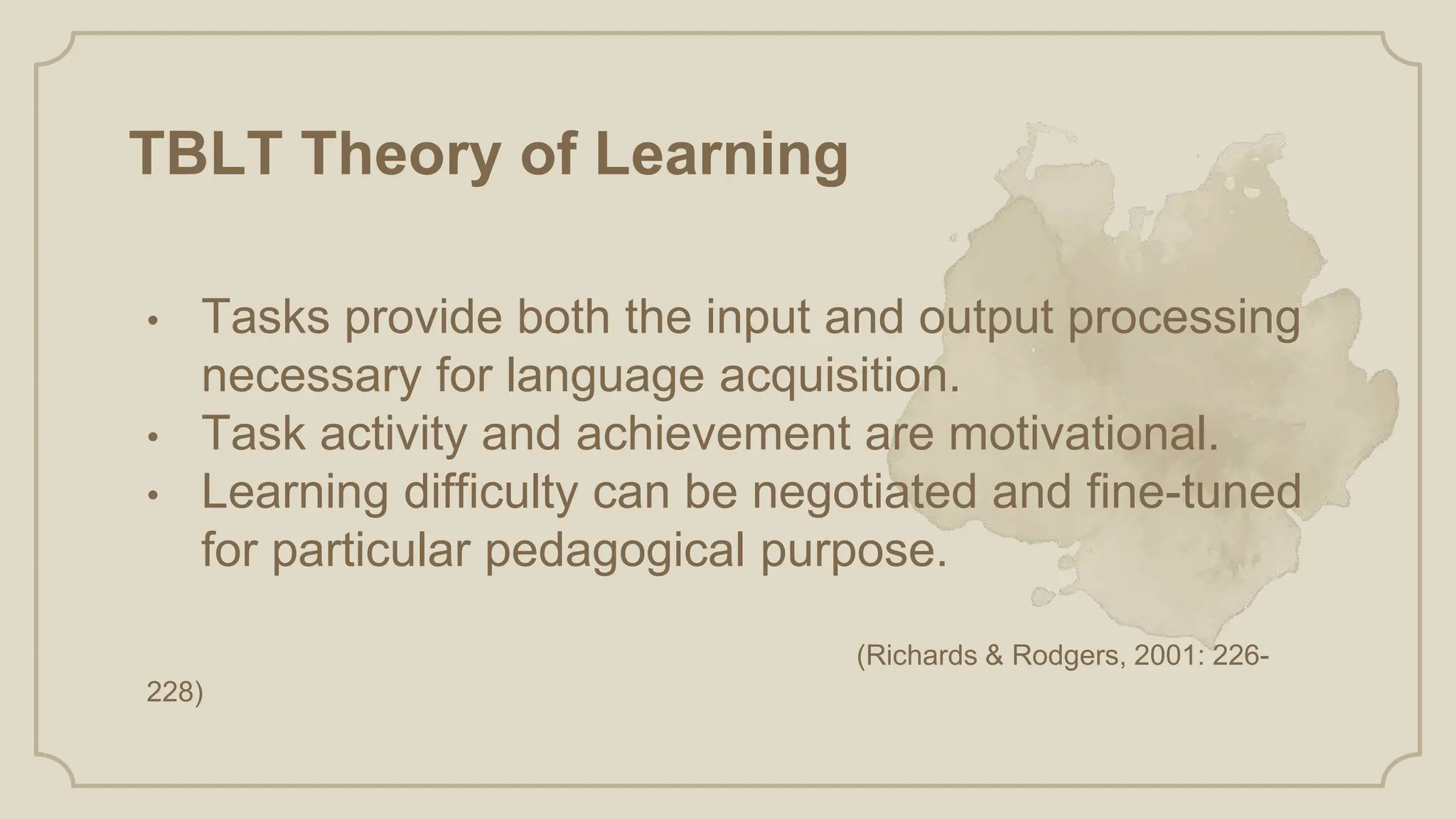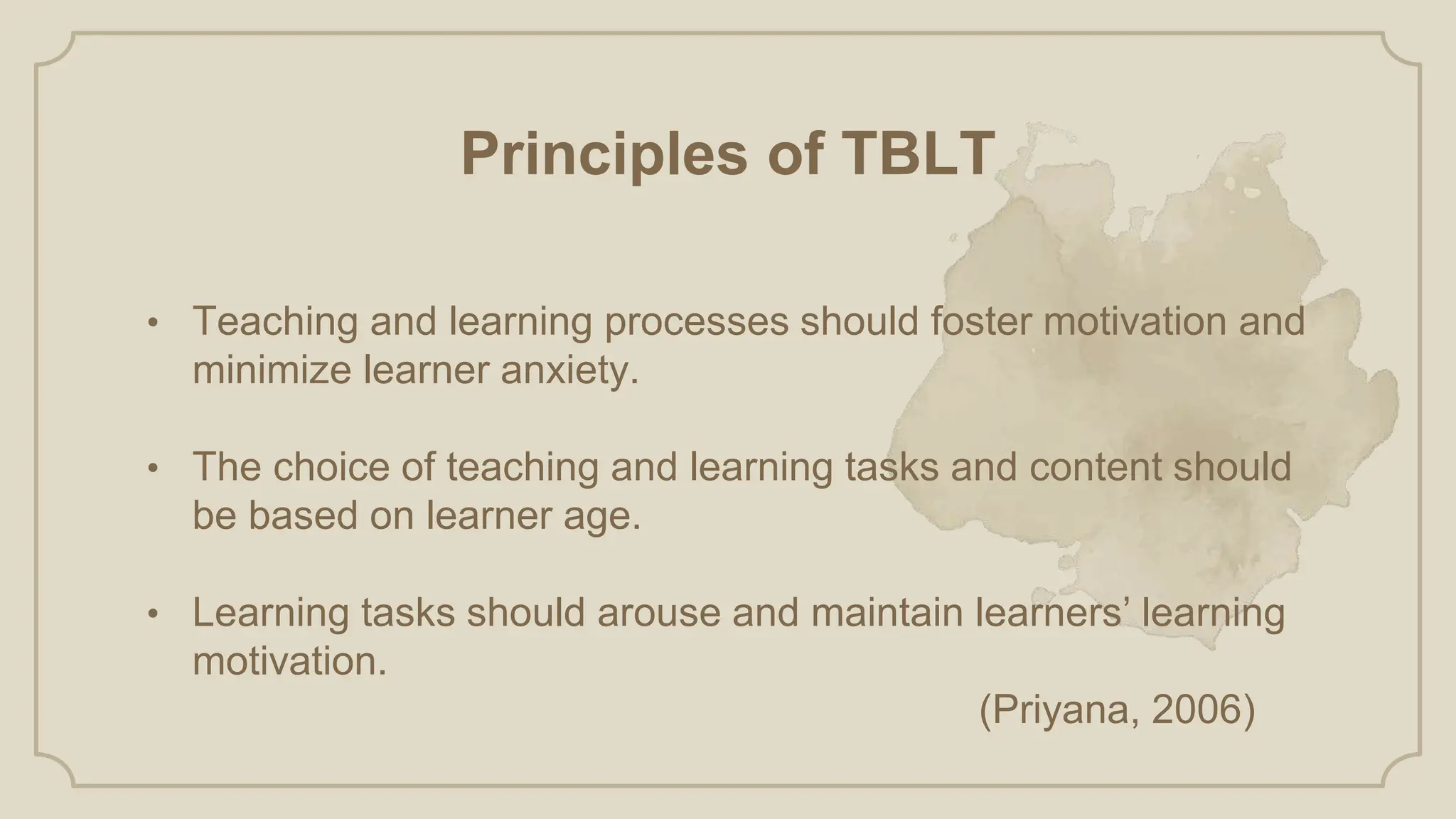Task Based Language Teaching (TBLT) is an approach that focuses on using tasks to teach language. It provides students with meaningful tasks to complete using the target language. The document discusses TBLT in three parts: background on tasks and TBLT; how a TBLT lesson would be designed; and conclusions about the approach.


























